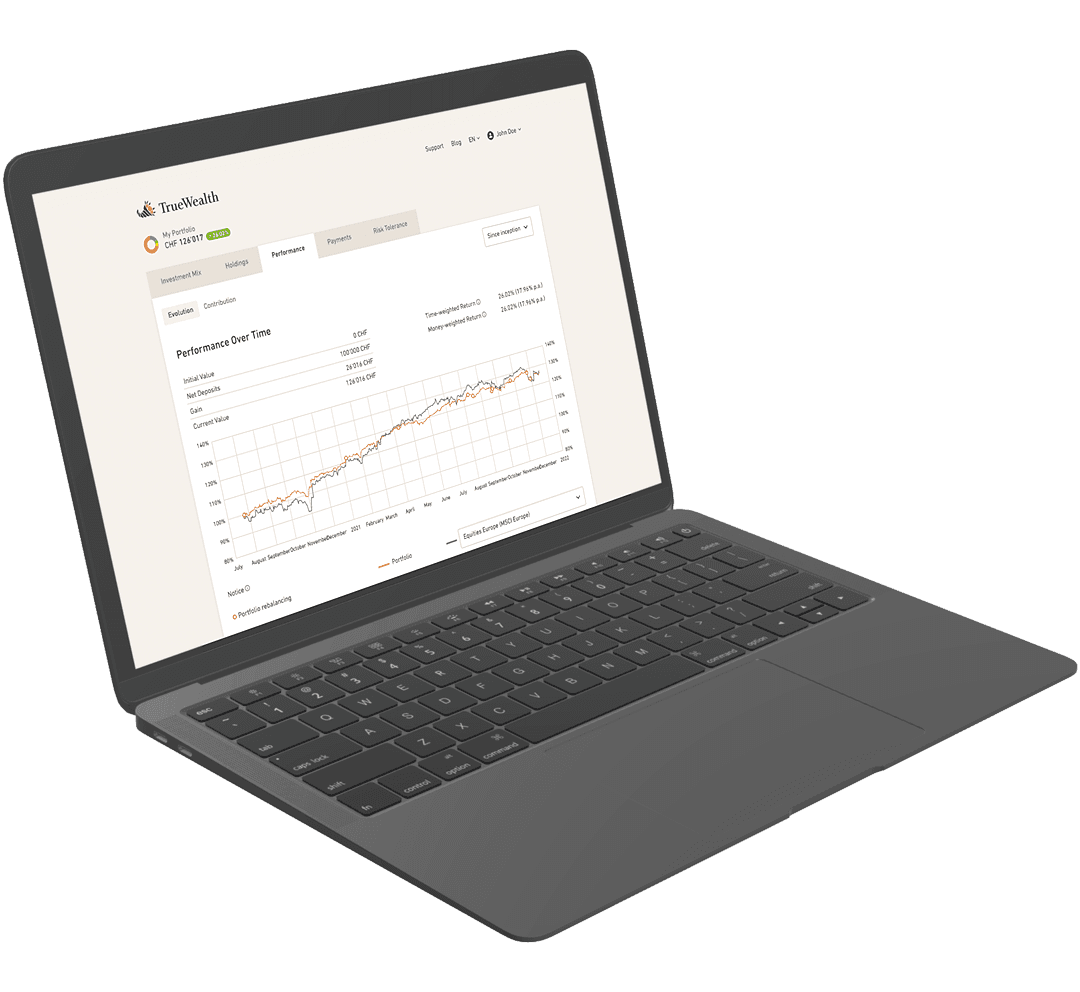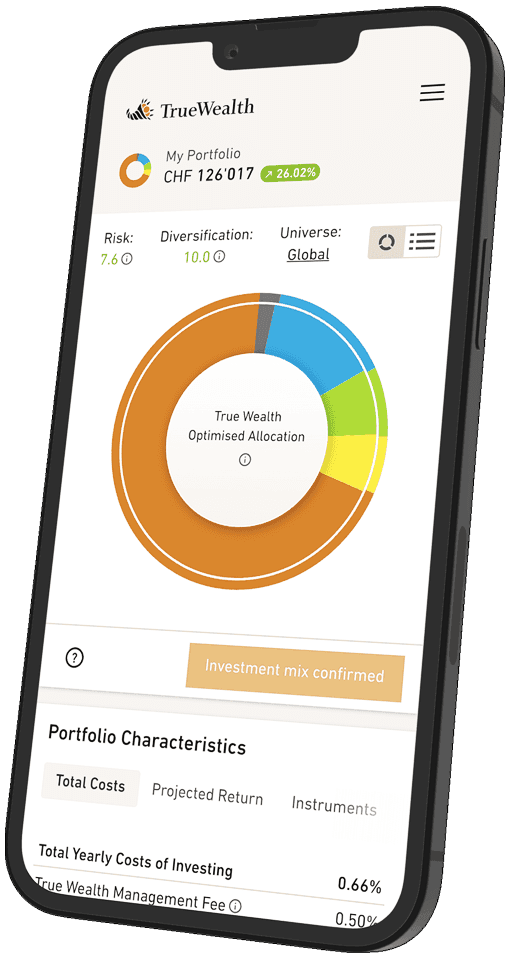#50 ETF savings plan or digital wealth manager: which one is better?
ETF savings plans are becoming increasingly popular. But what exactly is an ETF savings plan? And how does it differ from a digital wealth manager?
ETFs are the success story of our time. The abbreviation stands for «Exchange Traded Funds». These are funds that can be traded on the stock exchange like shares. They are becoming increasingly popular.
There are two reasons for the ETF boom:
- Firstly, they limit the risk of loss compared to individual shares. When you buy an ETF, you invest in hundreds, if not thousands, of individual stocks with a single transaction of just one investment instrument.
- Secondly, unlike traditional funds, most ETFs are not actively managed. This means that the costs for investors are low, often less than 0.2 percent per year. Compared to actively managed funds, this is very little. These cost more than one percent per year on average. In addition, there are often front-end fees of up to 1.5 percent.
ETF savings plans are on the rise
ETF savings plans are offered by many neobanks and online brokers. Such savings plans usually invest in a single ETF. This allows you to deposit a certain amount on a regular basis, for example monthly. However, the bank only executes your purchases. This is why it is often referred to as execution only. You are responsible for analyzing and selecting the funds yourself. The effort involved in finding the most cost-effective and tax-efficient ETF from among thousands is often underestimated.
Typically, the provider of the savings plan will not recommend the cheapest ETF, but one that is lucrative for them. To do this, they have exclusive agreements with certain ETF providers or stock exchanges.
Disadvantages of ETF savings plans
For long-term investment success, it is crucial that you spread your risks across multiple asset classes and markets. To do this, you would have to find various ETFs yourself and buy them on different stock exchanges in different currencies.
You would also have to monitor and rebalance your investments yourself. Rebalancing ensures that your strategic allocation, i.e. your investment mix, is maintained in the long term. To do this, investments that have performed well are sold at a profit. The proceeds are used to buy investment securities that have become cheaper. This ensures that you do not gradually drift into a portfolio with excessive risks. A concrete example: US technology stocks have performed very well in recent years. If you don't rebalance, you carry a cluster risk in your portfolio.
However, your broker or online bank will not warn you if you take on too much investment risk in your savings plan that does not match your risk tolerance. The broker does not even know your risk tolerance.
Emotional hurdles are also important. When investing, your own psychology often gets in the way: in times of crisis, there is a risk of selling rashly or stopping your savings plan. This inevitably costs returns. Fear is a poor advisor.
Online wealth management
And now to wealth management. There is an important basic principle to this service. Your wealth manager must act in your best interests. This applies to all investment decisions and also to the selection of ETFs. This is a fiduciary duty that is enshrined in law.
At the outset, an wealth manager or online platform analyzes your personal financial situation. This involves evaluating your risk capacity, risk appetite, and investment objectives. This assessment is used to create a personal risk profile. This forms the basis for your individual investment strategy.
A suitable strategy is crucial to ensure that you remain relaxed even in difficult times. This strategy is used to determine which asset classes are included in the portfolio and with what weighting. A good wealth manager will also take your personal preferences into account at this stage. Examples include sustainable investments or currency hedging.
What we do at True Wealth
At True Wealth, we focus on finding the optimal mix of ETFs for your portfolio. With over 10'000 ETFs on the market, it is essential to make the right choice in terms of product costs, provider, size, liquidity, trading range, and tax efficiency.
A typical portfolio does not consist of just one global ETF. Instead, we use selected ETFs for each region and asset class. This allows for granular adjustments at any time. You can find out more about how to build a portfolio from different ETFs in the podcast: «How do you build a portfolio with ETFs?».
Once you have invested, it is important that your portfolio remains balanced in the long term. We ensure this balance through regular rebalancing.
Wealth management has the great advantage that you do not have to constantly worry about the details. This saves a lot of time and effort, allowing you to remain relaxed even in turbulent phases with volatile market prices.
In summary, an ETF savings plan is like an airplane that you have to fly and maintain yourself. Wealth management is like an airplane with experienced pilots. Both options have their merits and are justified.
Were you aware of the advantages of online wealth management compared to an ETF savings plan? Send me an email with your feedback.
About the author

Founder and CEO of True Wealth. After graduating from the Swiss Federal Institute of Technology (ETH) as a physicist, Felix first spent several years in Swiss industry and then four years with a major reinsurance company in portfolio management and risk modeling.

Ready to invest?
Open accountNot sure how to start? Open a test account and upgrade to a full account later.
Open test account